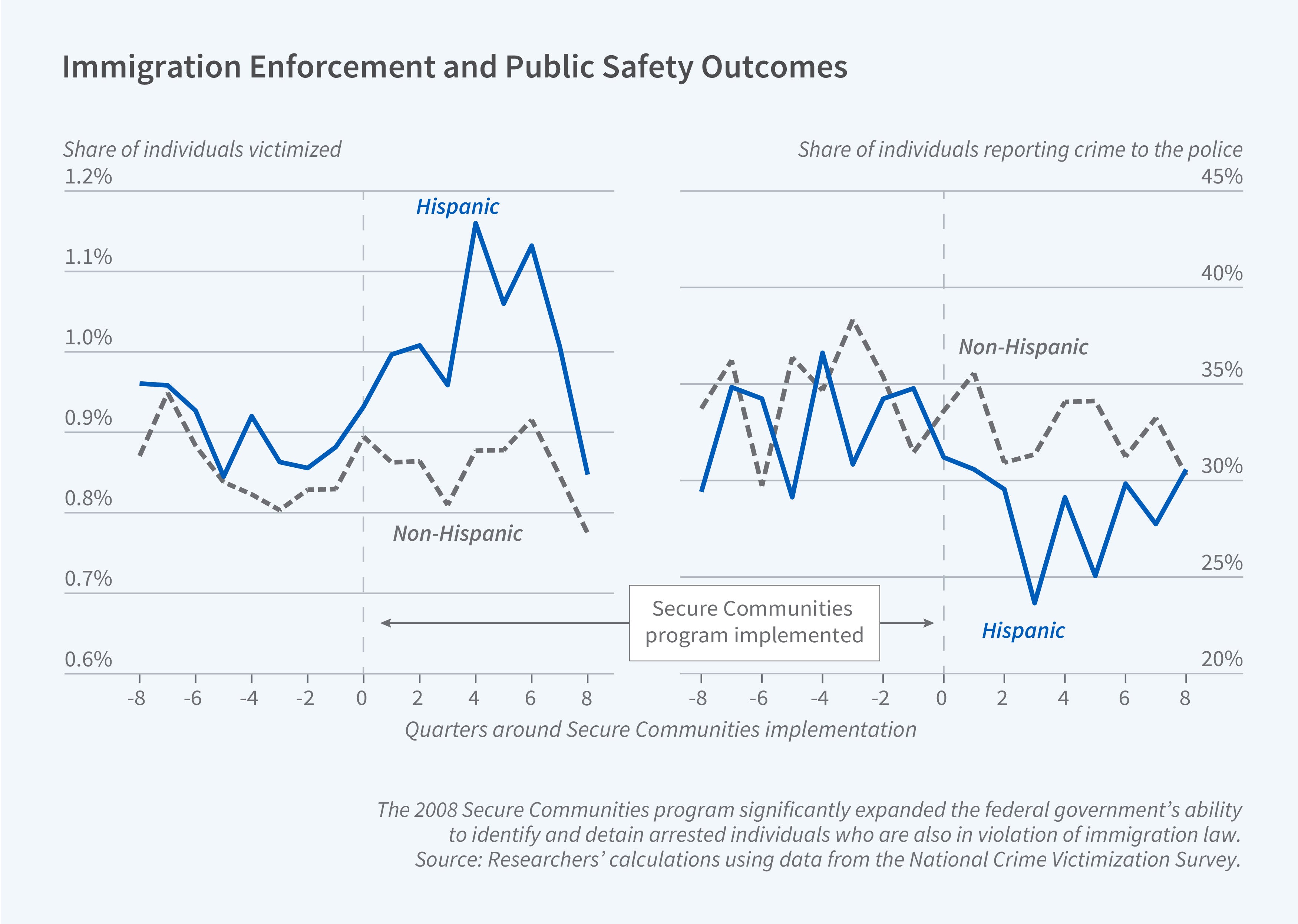Increased Immigration Enforcement and the Public Safety of Hispanics

In 2008, the US government launched the Secure Communities (SC) program, an information-sharing initiative that expanded the government’s ability to identify and detain individuals in violation of immigration law who were arrested for criminal offenses. The program, which was promoted as a way to improve public safety, was implemented piecemeal across counties between October 2008 and January 2013. It doubled the number of individuals transferred to Immigration and Customs Enforcement (ICE) custody, 90 percent of whom were Hispanic.
The SC program required that the fingerprints of individuals booked in local jails, typically sent to the Federal Bureau of Investigation, also be forwarded to the Department of Homeland Security. This latter agency could then determine whether to initiate deportation proceedings. Over half of subsequent ICE arrests resulted from these local law enforcement referrals, and the program raised the number of transfers to ICE custody by 50 percent. Following this increased collaboration between local police and federal immigration authorities, law enforcement officials warned that this program would reduce trust in police among immigrant communities and reduce police effectiveness.
In Immigration Enforcement and Public Safety (NBER Working Paper 32109), Felipe M. Gonçalves, Elisa Jácome, and Emily K. Weisburst study the county-level introduction of the SC program and the effect of this increase in immigration enforcement on criminal victimizations and on the likelihood of victims reporting crimes to the police. Using data from the National Crime Victimization Survey, they show that after the SC program went into effect, Hispanics were 30 percent less likely to report criminal incidents to the police.
Mandatory information sharing between local police and ICE led to a 30 percent decrease in reporting of crimes and a 16 percent rise in victimization among US Hispanics.
At the same time, victimizations of Hispanics rose 16 percent, which translates to 1.3 million more crimes — mostly property crimes — with Hispanic victims in the two years following the program’s implementation. The researchers did not find any change in crime reporting or victimization rates for non-Hispanics. Counties with larger declines in reporting rates experienced larger increases in victimization rates, suggesting that the decline in crime reporting among Hispanics was the key channel through which SC increased victimization.
The researchers also analyze data on 911 calls and arrests from 75 US police departments over the 2006 to 2013 period. They find that the volume of arrests post-SC did not change in either Hispanic or non-Hispanic neighborhoods, but that in predominately Hispanic neighborhoods there was a 3 percent decline in the Hispanic share of arrestees. This change in the composition of offenders is consistent with the SC program having raised the expected cost of committing a crime — by increasing the likelihood of deportation — among unauthorized immigrants. On the other hand, citizen offenders were incentivized to commit additional crimes given the lower likelihood of apprehension in these neighborhoods.
The research shows that officially reported crime rates may obscure substantial changes in underlying victimization levels. Reported crime rates were unaffected by the SC program, masking the increase in Hispanic victimization and the decrease in Hispanic crime reporting. This finding highlights the crucial importance of separately measuring changes in victimization and reporting behavior to accurately detect the full impact of policies like SC on public safety.
— Leonardo Vasquez
The researchers are grateful to the Russell Sage Foundation and the Ziman Center for Real Estate for generous funding.


